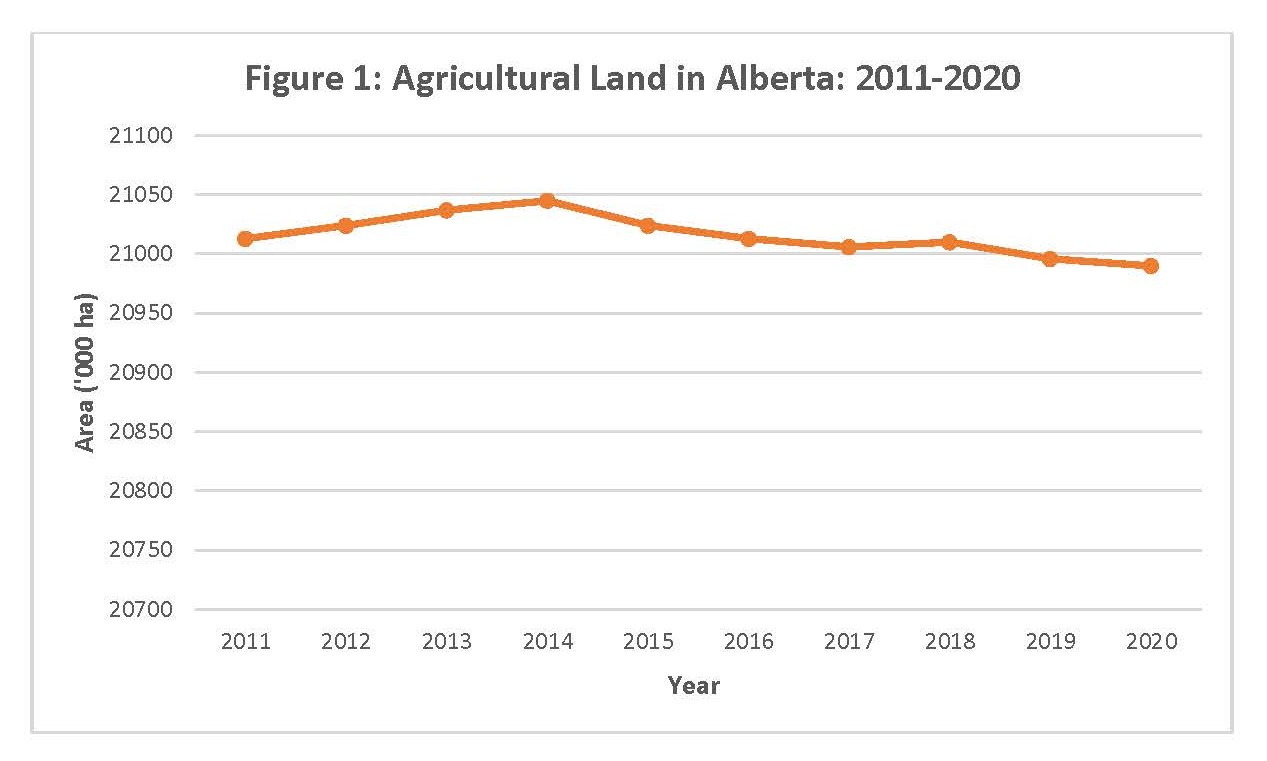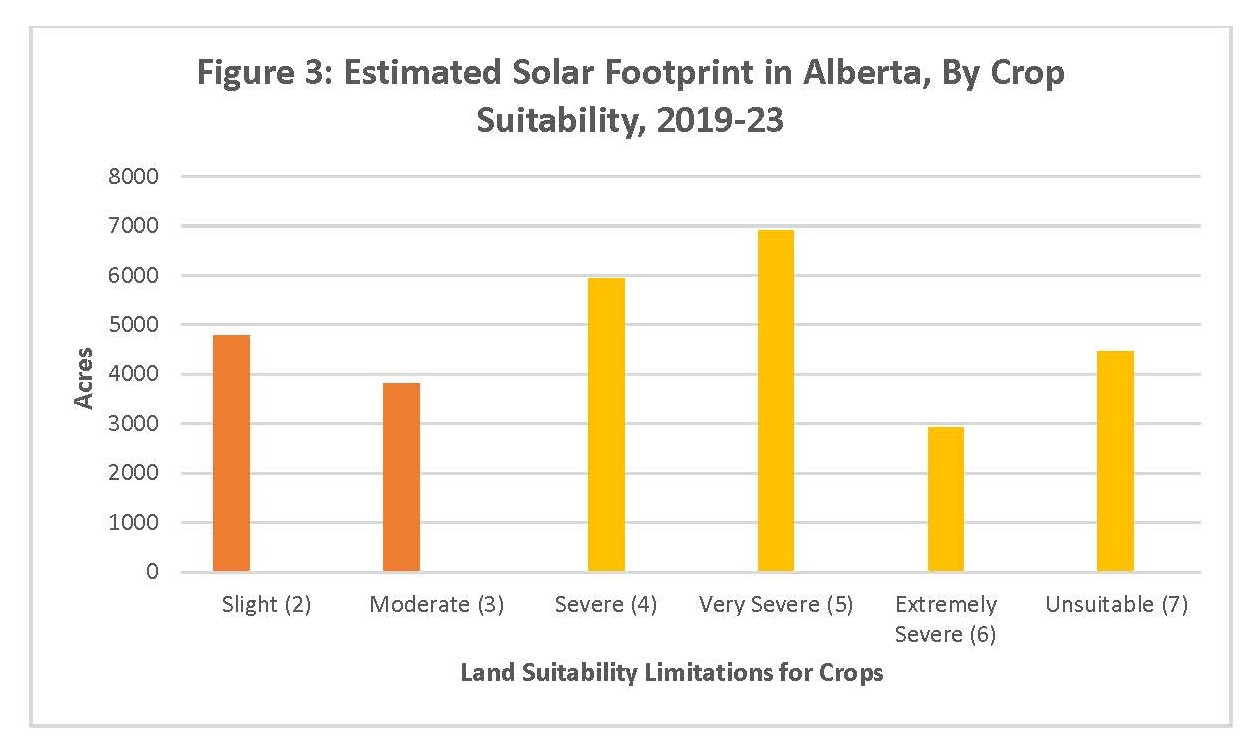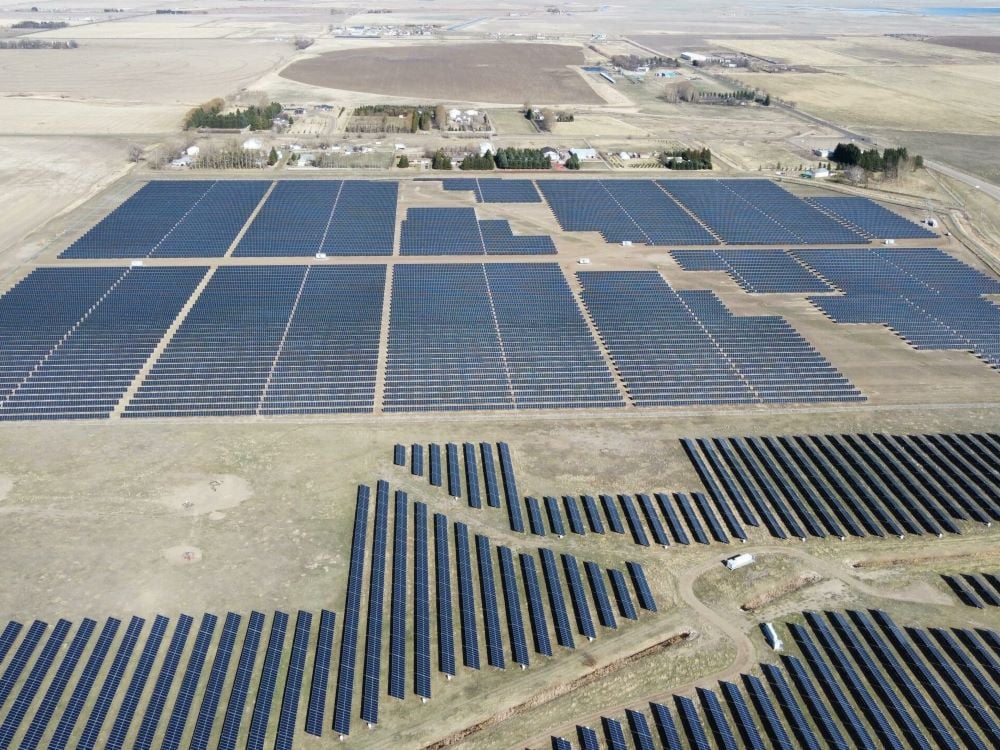Does renewable energy really pose a threat to Alberta agriculture?
Alberta’s UCP government claimed as much when it slapped a seven-month moratorium on utility-scale renewable electricity approvals in August. Now, all new electricity generation applicants must describe their project’s impact on agricultural land. Will it occupy good or poor agricultural land?
Premier Smith’s government offered no evidence to suggest renewables posed a credible threat to agriculture. It said nothing about the state of agricultural land in Alberta. It said nothing about the quantity and quality of agricultural land taken up by renewables during the boom she put the brakes on.
Given that silence, let’s fill the void with some facts, figures and reality-based analysis.
How much agricultural land is there in Alberta now?
Alberta’s agricultural land inventory is smaller today than it was a decade ago, but the decline is negligible. In 2020, Alberta had nearly 210,000 square kilometres of agricultural land. That’s only 233 square kilometres, a tenth of a per cent less than in 2011.

What about so-called prime agricultural land? Some rural municipalities, central to the UCP victory last May, reportedly claim renewables gobble up the best farming land. In Alberta the best soil is found in Class 2 land — soil with only slight limitations for growing wheat, canola and barley. Class 3 land has moderate limitations and perhaps might be seen as close to prime.
Figure 2 shows Alberta lost 520 square kilometres of prime/close to prime farmland between 2011 and 2020, nearly two-thirds the size of Calgary. These losses were offset in part by increases in the base of less suitable Class 4, 5 and 6 lands. This second section of the agricultural land bank grew by 281 square kilometres over the decade.

Of prime farmland area lost, how much did solar projects take?
The short answer: none.
The only utility-scale solar facility established during this period, Brooks Solar, sits on industrial land.
But it’s early days for renewables in Alberta, so the future threat is what matters, right?
Let’s be generous to the premier’s logic. Let’s give her moratorium’s “prime agricultural land” justification a little more rope. The boom in solar had just started when the government slapped its moratorium on the industry. Alberta reports that 17 new solar farms began generating electricity in 2022. Maybe these solar farms are significantly threatening Alberta’s stock of prime farmland.
Figure 3 shows there’s little to no meat to this argument. The two orange columns show this larger set of solar facilities occupied approximately 35 square kilometres of Class 2 and 3 lands. This is less than the footprint of Okotoks, less than the area of the Town of Stony Plain.
Instead, the vast majority of solar projects approved between 2019 and 2023 sit on farmland rated as severe or worse for crop production. Seventy per cent of Alberta’s utility-scale solar power generators sit on these more marginal lands. The facts are clear: the solar boom in Alberta has inflicted little more than a scratch to Alberta’s stock of prime agricultural land.

This reality was underlined just before the government slammed the brakes on regulatory approvals. The Creekside Solar Project in Leduc, approved in mid-July, provides the emphasis. Interveners played the prime agricultural card when they objected to the project. They noted that Creekside was proposed to sit on Class 2 cultivated lands in Leduc County. The applicant responded by noting that the 127-acre project amounted to 0.03 per cent of the best agricultural land in the county. Furthermore, sheep farmers and market crop producers were interested in using the land while the project was generating green electricity.
Creekside therefore appears to be a very desirable utility-scale electricity project even taking into account the UCP’s stated general worries.
What, then, is the true threat to prime Alberta agricultural land?
If the government is concerned genuinely with any loss of prime agricultural land there are two much more culpable suspects to scrutinize. The first is urban expansion and the growth of rural residential subdivisions. More than 650 square kilometres of Alberta land was converted for these purposes between 2011 and 2020. In 2007 and 2019 Calgary and Edmonton, annexed 101 and 83 square kilometres respectively of land from surrounding municipalities. Agricultural parcels were included therein.
And, finally, there’s oil and gas. Ever untouchable, petroleum producers have spread their webs to every nook and cranny of Alberta. They have done so without ever having to report or justify to the government their impact on crop producing lands. The amount of land affected is mind-boggling. In the pipeline sector alone, oil and gas pipelines stretch across and under more than 440,000 kilometres of Alberta.
Yet, it’s the fledgling renewables sector, not oil and gas, that now must report to government regulators about the agricultural impacts of their plans.
The current renewables moratorium is a damaging, dangerous chapter in the UCP government’s campaign to turn Alberta into a province that time forgot. Premier Smith seems determined to dim the renewables boom, a very rare bright spot in Alberta’s climate change performance.
The premier should be asked whether she knowingly sowed disinformation about the relationship between solar power and agriculture in Alberta. The reality presented here certainly raises that question. ![]()
Read more: Energy, Alberta, Environment

















Tyee Commenting Guidelines
Comments that violate guidelines risk being deleted, and violations may result in a temporary or permanent user ban. Maintain the spirit of good conversation to stay in the discussion and be patient with moderators. Comments are reviewed regularly but not in real time.
Do:
Do not: